Managing and controlling your body weight
– October 23, 2023 | Text Scott Cranfield
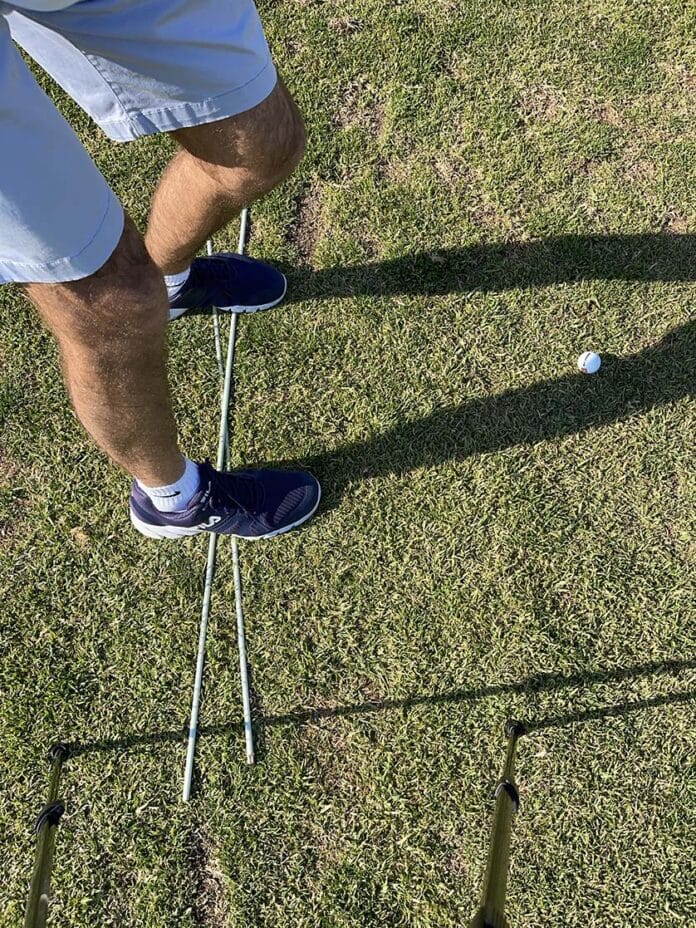
I hope you practised what I shared last month, and you are experiencing more solid strikes.
This month, I will continue the theme of managing and controlling your body weight with particular reference to the downswing.
The transition, i.e., when you complete the backswing and start your downswing, is a vital part of the swing, and worthy of individual practice.
I am going to start with the overhead image that shows two alignment sticks (image 1) showing how the pressure under my feet has gone from being evenly balanced, i.e., 50:50 front to back and 50:50 left to right, to where it is now slightly favouring the rear of my right foot and the forefoot of my left foot. You can see this change represented by the two sticks.
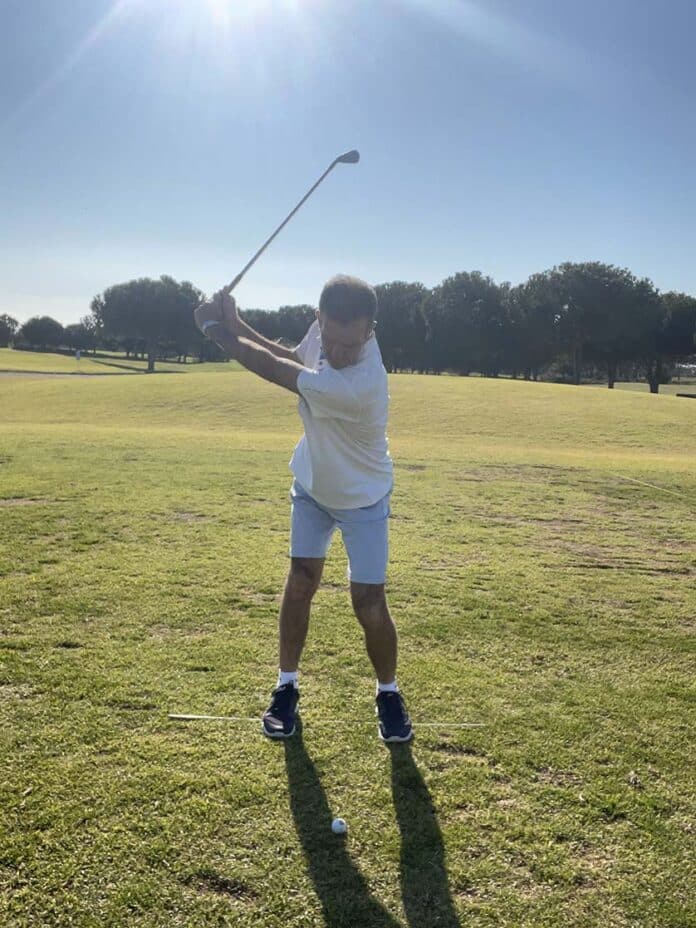
So, let’s now move into your backswing (image 2) and then transition into the downswing by moving your body weight towards your lead side without any rotation (images 3 and 4). Yes, that’s right, don’t start unwinding your body; just gently shift your weight towards your lead side, and then it begins to turn after that.
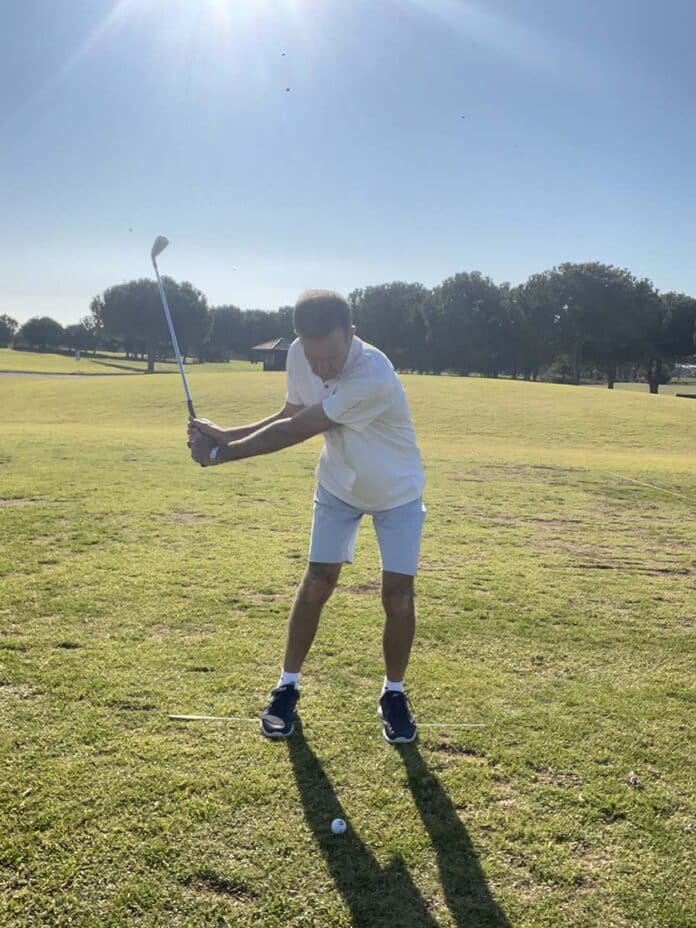
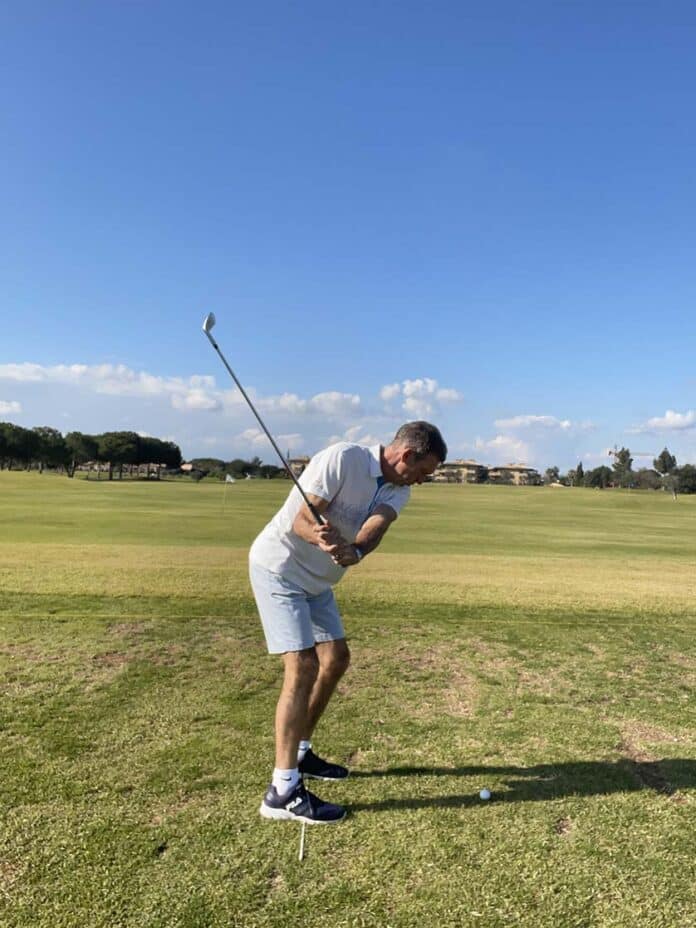
Once the rotation has started, it will continue and then, at the end of the swing, your body weight will be towards your left heel, but not so much that you are falling over to the left.
(image 5) It’s ok for your weight to have travelled towards the outside of the left foot (image 6), but don’t let it go so sharply to your left heel that you lose balance.
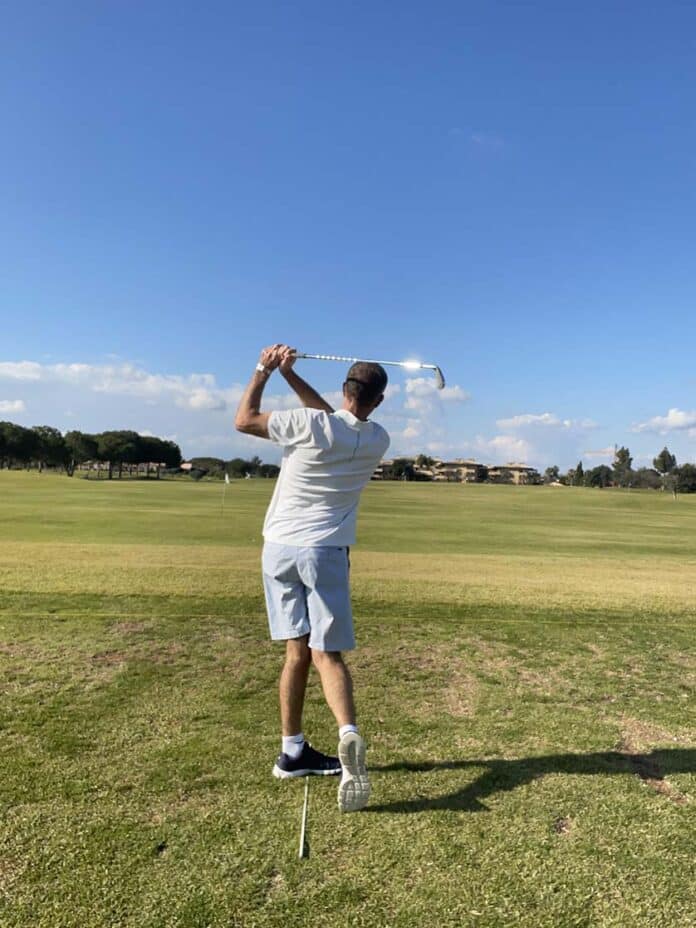
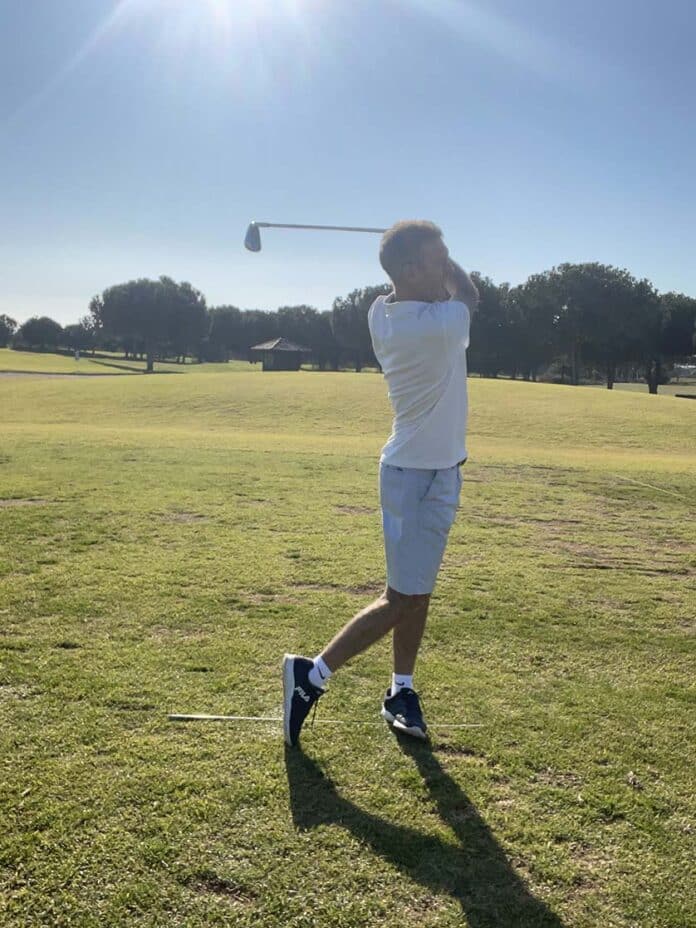
So, let’s bring the two months’ instruction together… make sure, when you set up, that you’re 50:50 either side of the alignment stick, so that the front and rear of your foot are connected to the ground (image 7)
When you make your back swing, practise it until you can get the awareness that you have very slightly moved to the heel on your back foot, and slightly to the forefoot on your lead foot. Here is a reminder of what that looks like (image 8)
In the transition, feel like you move your weight, so it goes very slightly forward and then rotates, rather than letting the weight suddenly go to your lead heel too soon Look back at image 3 and 4 to help you picture this.

I encourage you to get to work, and don’t worry if you don’t have an alignment stick; just a simple bit of cane, even a golf shaft, will work. All you need is something through the middle of the feet that helps you sense slight changes in the pressure between your feet and the ground.
I suggest doing lots of practice swings indoors, or in your back garden – you can make a lot of progress this way, and it will help you dial into your lower half and getting it to work effectively.
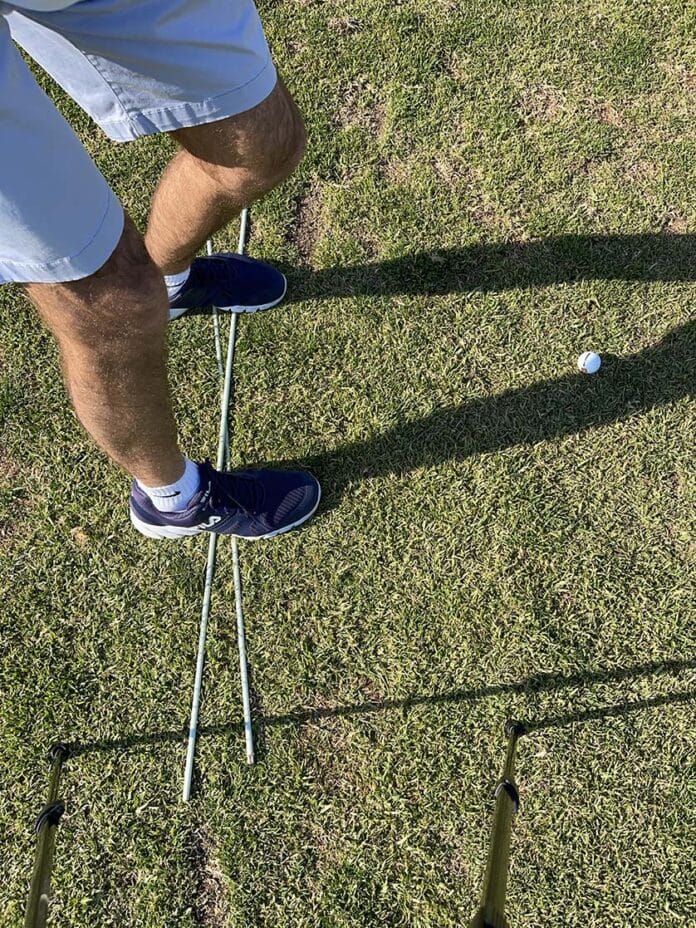
I’d love to know how you get on with it because, for me, it is a super drill that really can make a huge difference and simplify so much.
If you have any questions or would like to find out more about my coaching in the Algarve and UK, please visit www.scottcranfield.com or contact me on [email protected]
For more tips to help your golf, visit https://www.facebook.com/intuitivegolf
Scott Cranfield is a PGA Master Coach. For over 30 years, he has dedicated his life to helping golfers achieve their goals through a natural approach that embraces the true laws of how the human mind and body work. Scott’s unique approach has led to the creation of multiple training programmes, and the experience of coaching every standard of golfer from complete beginners through to Ryder Cup players. As well as enjoying a long TV career with Sky Sports and Setanta TV, in 2011 Scott was honoured with the award of PGA Master Professional and Coach.










